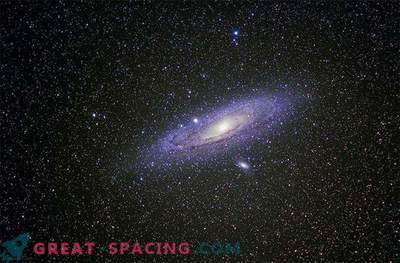
The sleeves and the core of the Andromeda galaxy glow among the sea of multicolored stars in a photograph of the cosmos obtained in the Dark Sky Alkeva Nature Reserve (Portugal)
When the first human ancestors of the genus Homo only dispersed around the planet, the light of the nearest galaxy to the Milky Way Andromeda embarked on a journey to our planet with a duration of 2.5 million years, providing the photo observed today.
The genus Homo, including modern humans, covers 1.5-2.5 Ma. The Andromeda Galaxy (M31) is 2.5 million light years distant from Earth. While the light has overcome this enormous distance, people have managed to evolve from stone tools to modern technologies in the form of rockets, telescopes and cameras, capable of looking into the depths of the Universe.
Despite the great distances, the Andromeda galaxy is the closest spiral galaxy to the Milky Way. Pulling on 220,000 light-years, it is also considered the largest galaxy in the Local Group — a collection of gravitationally connected galactic neighbors containing the Milky Way, the Triangle galaxy, and about 30 other smaller galaxies. In the bright photo you can see the sleeves and the core of Andromeda, immersed in the starry sea. Objects around a diffuse spiral shape are the stars of the Milky Way, visible in front of M31. The spiral shape is visible in visible light, but in ultraviolet images of the sleeves look more like rings.
Scientists believe that the ring-shaped silhouette suggests that over 200 million years ago Andromeda collided with an elliptical galaxy M32 (seen as a bright, round and diffuse figure to the left of the nucleus). Below you can see M110 - a dwarf elliptical galaxy and the Andromeda satellite.











































